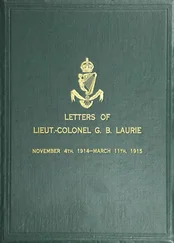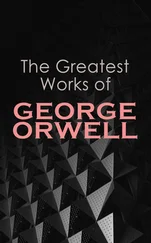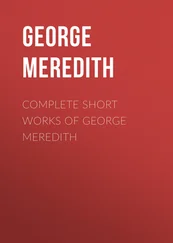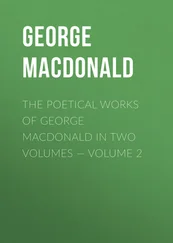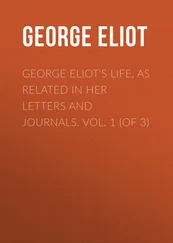Y entre los nombres, como señala Daniel Pinkas, destacan los que se refieren a cuadros y libros. Pintura y lectura, a las que se suman diferentes expresiones del arte de las que Santayana da buena cuenta al recrear para sus amigos sus frecuentes visitas a museos, al teatro, a la ópera, a conciertos musicales e incluso a tours culturales, así como sus paseos y observaciones acerca de la arquitectura (sobre la que tiene intención de escribir un libro —“si alguna vez lo escribo”— como menciona en su correspondencia a Westenholz en 1905), una de las profesiones que habría cultivado de haber tenido, como Pessoa, heterónimos.
Como un artefacto poliédrico, este volumen de cartas también admite diferentes aproximaciones y ángulos de lectura. Por una parte, invita a ser leído como el catálogo de un museo imaginario, a la manera de André Malraux, nutrido de apuntes impresionistas. En este sentido, muy bien podrían dar lugar estas páginas a otro ejemplar paralelo o complementario si lo ilustráramos con cada una de las obras de arte mencionadas, sería sin duda un díptico precioso. Y, por otra parte, también esta correspondencia, que suma un total de 90 cartas desde 1886 a 1937, se podría considerar una extensión o apéndice de su autobiografía Personas y lugares , o una suma de apostillas a los Pequeños ensayos . Consideradas como variaciones sobre una serie, estas cartas encierran materiales que, aunque nos resulten familiares porque nos remiten a buena parte de sus obras, siempre ofrecen, en su meditada espontaneidad, aquello que es propio de la filosofía: la ocasión inapreciable de volver a pensar la realidad y evaluar nuestro contrato con la misma durante nuestra frágil y efímera existencia.
Cuadros y libros, personas y lugares, paisajes y pasajes. Tantas idas y venidas, tantas partidas y llegadas, atravesando países en trenes y cruzando continentes en barcos, alojándose en hoteles y residencias universitarias, con paradas en cafés memorables, pronunciando conferencias aquí y allá, leyendo y escribiendo sin cesar. “He escrito tantas cartas —le dice a Loeser en 1887, cuando su actividad epistolar es todavía muy reciente—, que nunca sé que he dicho a uno y qué a otro”… Este puñado de cartas, que se suma al resto de su abundantísima correspondencia, es la prueba material de que la escritura para Santayana, en cualquiera de sus registros, es una manera más —cotidiana, inmediata, plagada de geniales impromptus —, de practicar la actividad filosófica. Una actividad que el filósofo ejerció también, no solo en soledad, sino también como una forma genuina de amistad intelectual. La mejor definición de filosofía para Santayana es la que la identifica con la vida de la razón, una vida que puede ser compartida y enriquecida a través del placer del diálogo y la conversación. Estas cartas recién descubiertas son una muestra sensible, lúcida y deliciosa de esa conversación. Ahora tenemos la ocasión inigualable de sumarnos a ella enriqueciéndonos también como lectores, compartiendo el propósito común de alcanzar la mejor versión de nosotros mismos, nuestra dimensión más humana. De alguna manera, al participar también de la experiencia que ofrecen estas páginas, guiados de la mano de Santayana, también podremos decir con sus propias palabras al finalizar estas cartas: “Vi cosas que nunca olvidaré.” Y de paso, habremos conocido un poco mejor al autor de estas cartas pues, como afirmó William James en Un universo pluralista , “la visión de un hombre es lo más importante acerca de él.”
Las cartas originales están disponibles en la página web de la Santayana Edition , sección Texts gracias a la encomiable gestión de su director, Martin A. Coleman. Debemos a Megan Young Schlee la transcripción de las cartas a Charles A. Loeser, y a Matthew N. Preston II la transcripción de las cartas a Albert W. von Westenholz, con la cuidadosa revisión de Martin Coleman, a quienes reconocemos su dedicación. La traducción y edición crítica de este libro son de Daniel Moreno, con la tarea minuciosa y rigurosa a la que nos tiene acostumbrados. Tanto Daniel Pinkas como Daniel Moreno pensaron desde el principio publicar este volumen en la Biblioteca Javier Coy dÉstudis Nord-Americans de la Universitat de València, que añade este nuevo título a otras publicaciones previas sobre el autor. Esta edición no hubiera sido posible sin su decisión y empeño, como tampoco hubiera sido posible sin la implicación entusiasta y el generoso apoyo, una vez más, de la directora de esta colección única de Estudios Norteamericanos, la Dra. Carme Manuel. Quede constancia de nuestro agradecimiento a todos ellos por hacer accesible esta nueva edición en inglés y en español para que pueda alcanzar una lectura más amplia en las dos orillas del Atlántico, y más allá.

Almacén del padre de Loeser/Loeser’s father establishment
Daniel Pinkas
Among the countless challenges facing the truly monumental and still ongoing publication of the critical edition of The Works of George Santayana , none could have been greater than that of gathering, annotating, and contextualizing the more than three thousand letters that Santayana wrote throughout his life to his family, friends, colleagues, publishers and admirers. This collection ranges from 1868 (a letter to his sisters when he was only five) to 1952, the year of his death. The outcome of this stupendous task is housed in the eight books of letters, edited by the late William Holzberger, that constitute Volume 5 of the critical edition, published between 2003 and 2008.
At the outset of his introduction to The Letters of George Santayana , Holzberger provides an answer to the question: «Who was George Santayana?» that can hardly be improved upon as a succinct presentation of the author:
George Santayana (1863-1952) was one of the most learned and cultivated men of his time. Born in Spain and educated in America, he taught philosophy at Harvard University for twenty-two years before returning permanently to Europe at age forty-eight to devote himself exclusively to writing. He knew several languages, including Latin and Greek. Besides his mastery of English, he was at home in Spanish and French (though he modestly down-played his knowledge of those languages). As a young man, Santayana studied Italian in order to read Dante, Cavalcanti, Michelangelo, and other Platonizing poets in their own language; and, in later life, as a result of his long residence in Rome, he acquired facility in speaking Italian. While a student in Germany during 1886-88, Santayana lived with Harvard friends in an English-speaking boardinghouse in Berlin, thereby missing an opportunity to learn to speak German properly. However he could read the original versions of German literary and philosophical works. He also knew the world, having lived for protracted periods in Spain, America, England, France, and Italy. A true cosmopolitan, Santayana nevertheless always regarded himself a Spaniard and kept his Spanish passport current. He possessed many talents and had a multifaceted personality, and each of those facets is reflected vividly in his letters. World famous as a philosopher, he was also a poet, essayist, dramatist, literary critic, autobiographer, and author of a best-selling novel. 2
It is hard to overstate the importance and usefulness of The Letters of George Santayana to Santayana scholars, wherever their focus of interest may lie. The more philosophical letters shed light, often in unexpected ways, on Santayana’s fundamental philosophical tenets: his materialism, his naturalism, his theories of essence and truth, his doctrine of animal faith, his ideal of the «life of reason» and his conception of the spiritual life; they are filled with mordant comments on the views of other philosophers, classical and modern. Many letters state his views on religion, science, literature, history, politics and current affairs. Obviously, the letters are full of crucial biographical information, sometimes sprinkled with delightful gossip. For a less specialized audience also, Santayana’s letters can be a wonderful source of information, inspiration and fun. They offer an unforgettable, and most enjoyable, opportunity to hear, so to say live, the unique voice of a supremely smart and wise philosopher who is at the same time, fully, a human being with a very distinctive history and intellectual background. Santayana’s flair for finding the most appropriate word is everywhere on display, from the briefest thank-you note to the most extensive metaphysical discussion.
Читать дальше


